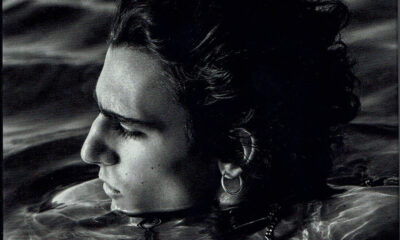Music
The Unknown Music: A Flock of Seagulls
An artifact from the 80s that should have been kept there.
Editor’s note: As part of CMN’s ongoing music journalism program, we asked our team of music writers to find and write about a physical piece of music (CD, album or cassette) they had no prior knowledge of. You can find out how it all unfolded by browsing our music section.

A Flock of Seagulls’ best-of record is about as 80s as it gets.
Dreamy synths and low-pitched vocals dominate the aesthetic, and add a nostalgic feel.
One thing that caught my eye when visiting my local Newbury Comics in Danvers, MA was the cartoonish cover art portraying a flock of seagulls (no pun intended) exiting a stereo player in what looks like a living room.
Initially, I was surprised to have never heard of the band, especially since they had a best-of album. Also, my parents grew up in the 80s, but never bothered to mention their existence to me. Regardless, the peaceful imagery (and cheap price) warranted the purchase.
Like a lot of music in the 80s (Prince, Whitney Houston, The Outfield’s “Your Love”), the concept of love is explored in its many facets. The synth-pop record epitomizes an era where sound and style meant everything. Even if the songwriting wasn’t always there (like on the overly-simplistic “Telecommunication”), the different production techniques were.
The band took advantage of the technological advances during that time period, and utilized reverb and ambience for maximum creativity. Those additions to the mixing helped mitigate lyrical restrictions on certain tracks, like “Telecommunication,” or “Who’s That Girl (She’s Got It).”
The vocal effects on the latter are reminiscent of Brian Wilson’s work on Pet Sounds (like “Sloop John B”), where he would use his voice as if it were blended in with the instrumentation-or as another instrument altogether.
In A Flock of Seagulls’ case, the added effects are employed in a catchier pattern. Not to mention, Wilson’s arrangements were a lot more depressing and slow-paced.
Some of the Seagulls’ best stuff came off as borderline derivative of other bands. Sure, many of their choruses are sticky and memorable (like on “The More You Live, the More you Love”), but for the most part, a lot of the drum and guitar loops have already been explored in music (like on some of Prince’s early hits).
Artists like Prince added more nuance to their aesthetic, which made the music itself stand out. On a majority of these singles from the Seagulls, that’s tough to do, mainly because of their habit of playing victim to the glamorous trends of the 80s without expanding on the style – Prince was good at utilizing them on his first couple of albums.
Every once in a while, the band incorporates a fun little sound effect to boost the excitement, like the fluttering seagull noises on the first track — “I Ran (So Far Away)” —, or the haunting guitar riffs on “Nightmares.” Moments like these differentiate the Seagulls from some of their contemporaries.
My biggest gripe with the record involves the drawn-out length, and questionable stylistic choices. I’m always interested when an artist or band releases an extended version of one of their prior singles. Normally, the reason for a re-release is to enhance an aspect of the cut that wasn’t there beforehand (think Kid Cudi’s “Surfin” song).
In the Seagulls’ case, they decided to add extended cuts for “Wishing” and “The More You Live, the More You Love” to this package.
The original versions are groovy love ballads filled with atmospheric synths and flickering keyboard patterns. For the extended renditions, I thought maybe the group would add more vocal affects, or crazier guitar play, like on Beck’s “Dreams” remix. Instead, “Wishing” becomes a bare adaptation of its original counterpart, featuring the same synth line for nine painstaking minutes. The changes made on”The More You Live, the More You Love” are also very minimal, leaving no reason for it even existing.
Honestly, I’m not sure why this album exists in the first place. I was originally impressed with the Seagull’s simplistic but clever cover art, as well as their infectious 80s aesthetic. Unfortunately, the music doesn’t reflect that. Most of the time, I was just thinking of other artists who’ve presented these concepts in a more interesting manner.
If you obsess over singers and bands, and are one of those people who make a playlist for every occasion, join CMN’s Music Journalism Course and get real-time experience, intense feedback on your writing, exposure to music industry insiders, and a great place to display build your portfolio. Get all the details on the Music Journalism Course here.











